Fence types and how to choose them: find the best one for you
Our guide to fence types will help you pick the perfect design for your garden boundaries
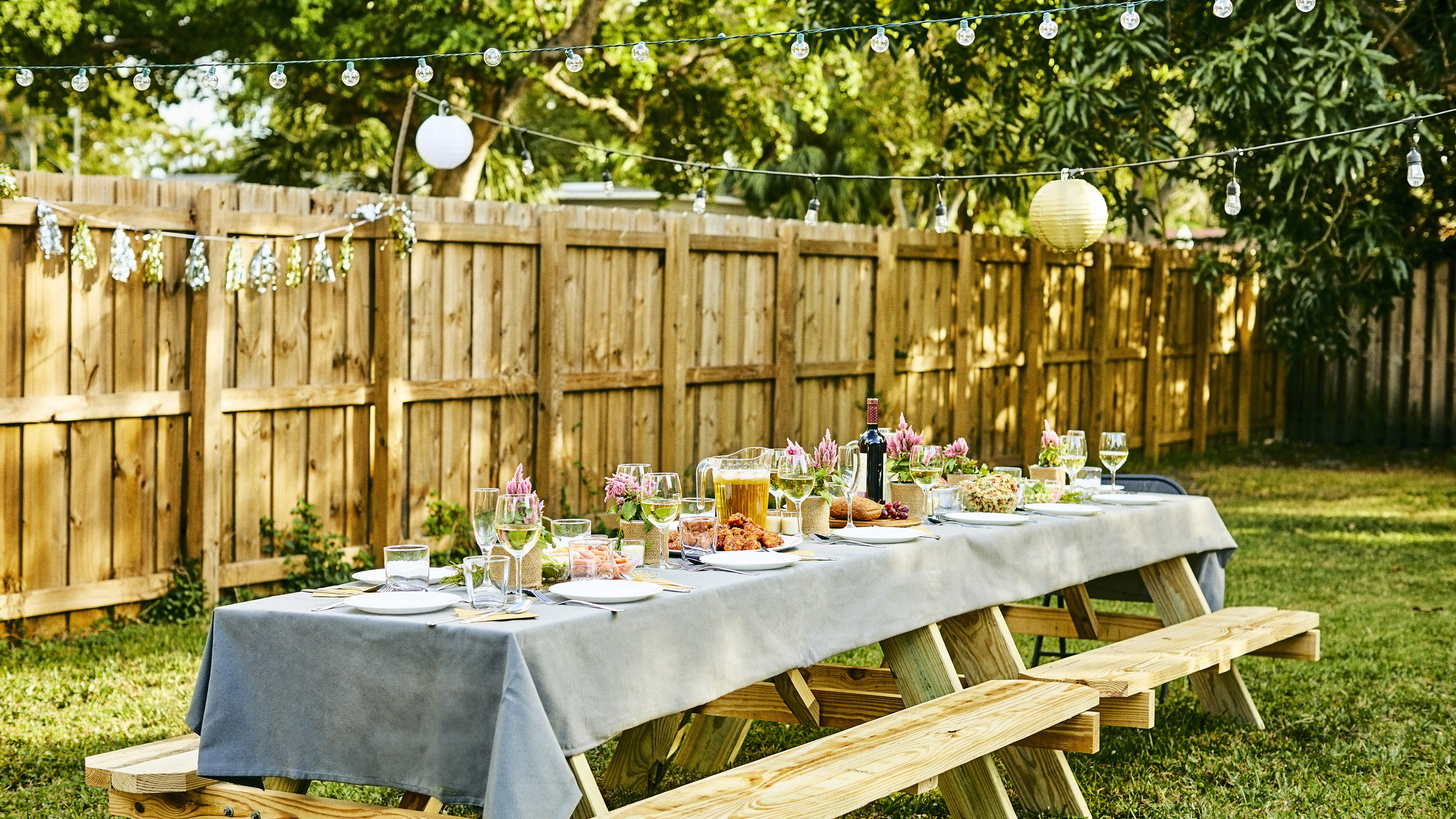

Choosing from the many different fence types is one of the key decisions you'll have to make when landscaping your backyard. A well maintained boundary is not only vital for security, as regardless of the size of the garden, clear boundaries will also give a sense of privacy as well as a smart finish to your outdoor space.
A garden fence is an attractive and relatively maintenance-free way of achieving this. Fencing also provides an ideal backdrop for plants, as well as protecting the garden from changes in weather.
There are so many garden fence ideas to choose from, which can make you feel overwhelmed, particularly because fencing will not only need to fit with your backyard's style, but also meet your individual budget and maintenance requirements. If you're thinking of putting your house on the market then a solid fence could be a big plus to potential buyers too.
The type of materials you use in your fencing can make all the difference too, as explains Sophie Birket, founder of Screen With Envy. 'When thinking about the material choice, it's important to look at the longevity of the product and what the ongoing maintenance costs will be.'
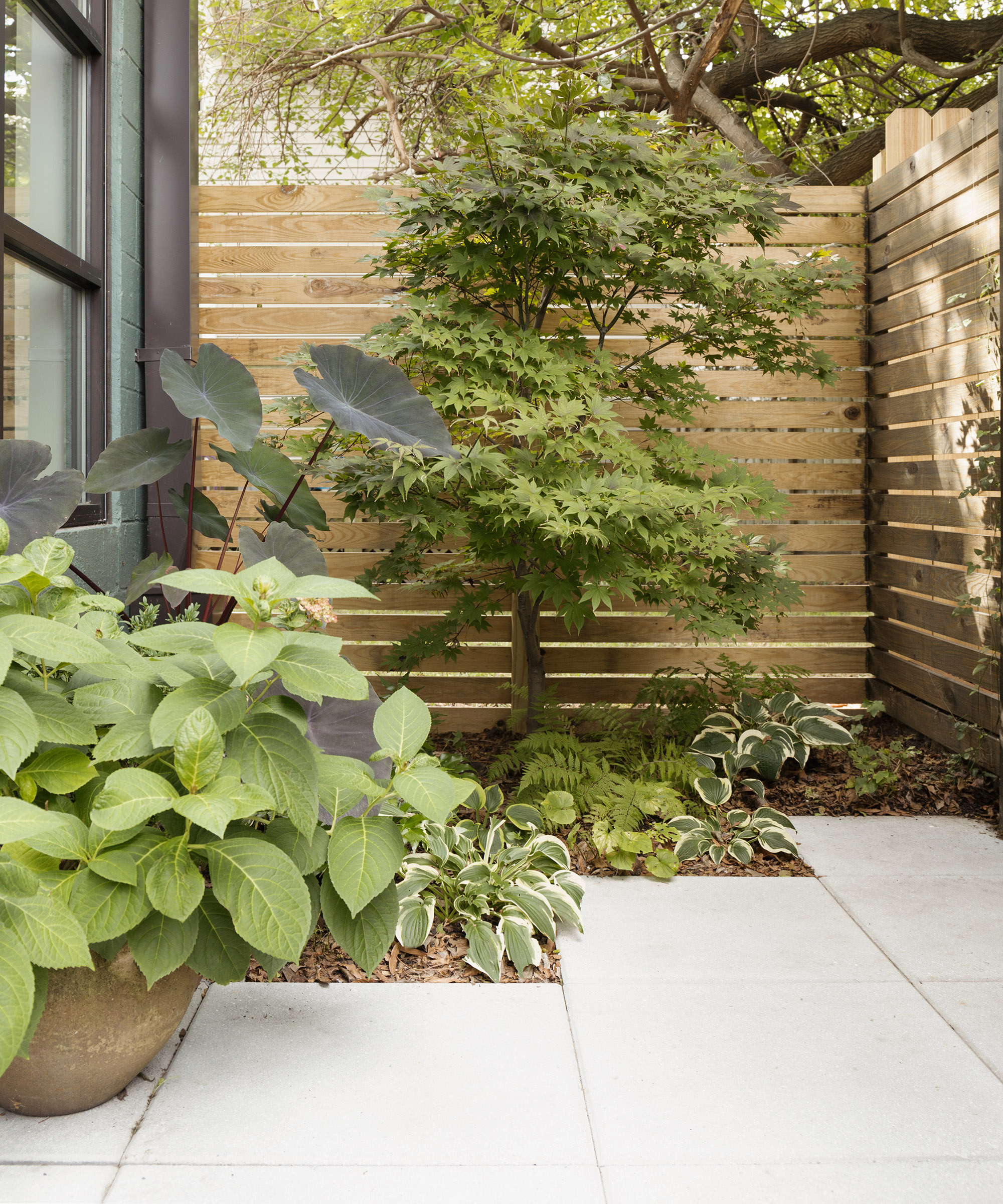
How to choose the best fence types for your plot
There are several fence types to choose from and it's a good idea to think of the overall look you want to achieve when deciding which one to go for, explains Emily Crowley-Wroe at April House Garden Design 'Think about the style of your garden, the look and feel you want to achieve.
'For example, if you prefer a modern look with clean lines, contemporary slatted fences look sleek and come in a range of woods from single cedar slats to ready made panels in larch, suiting a range of budgets. For a natural country cottage-style, willow or hazel fencing blends beautifully into surroundings in the countryside.'
As well as looks, you'll want to think practically too. Is this fence intended to boost your garden privacy ideas, frame a view or be used as a garden divider to create zones within your plot? It could be that you need a barrier to surrounding noise or to complement your existing garden style.
Write up a tick list of what your needs and considerations are and see which of these fence types best fit your needs.
1. Natural woven wood fence
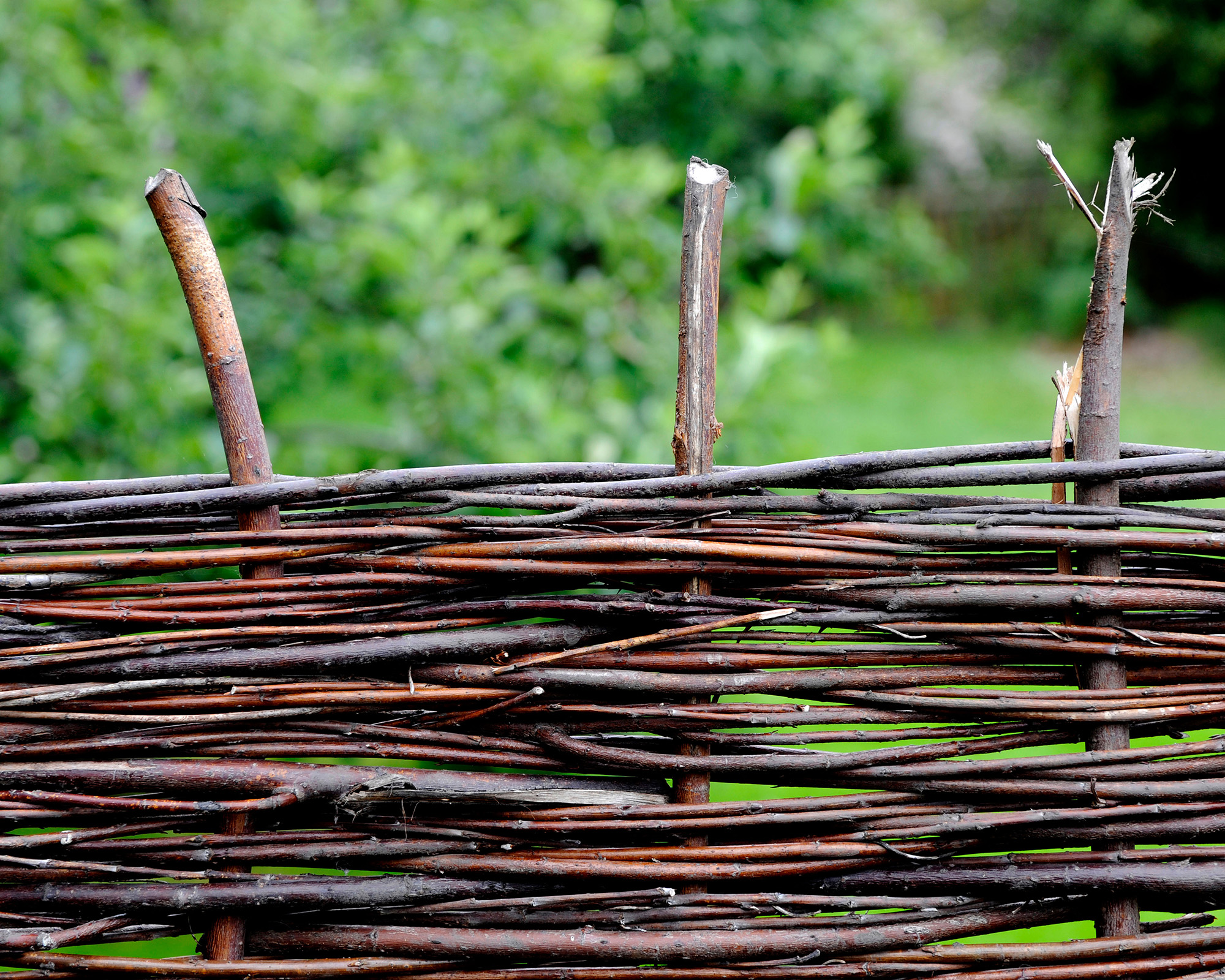
This type of fencing is made using canes of wood, usually hazel or willow, woven together. They have a rustic, handmade look, but they are surprisingly strong and durable. You can buy panels from certain garden centres and online from specialist fence suppliers.
The decorative design is perfect for people who prefer a more rustic and naturalistic look. If you're interested in how to create an eco friendly garden this would be a good option. It’s made from wood cuttings which encourages new growth, making this a sustainable choice.
Installation wise, you fit the panels (also known as hurdles) between two erected fence posts. They are attached to the posts by hand using wire or tough string. As long as the fence posts are strong and the panels are securely attached you should find that they can withstand fairly strong winds. This is because the natural gaps in the weave allows air to pass through.
If you just like the look of a natural fence but already have an existing boundary, you can buy a willow screen (readily available from Amazon) which can be placed over your current fence.
2. Picket fence
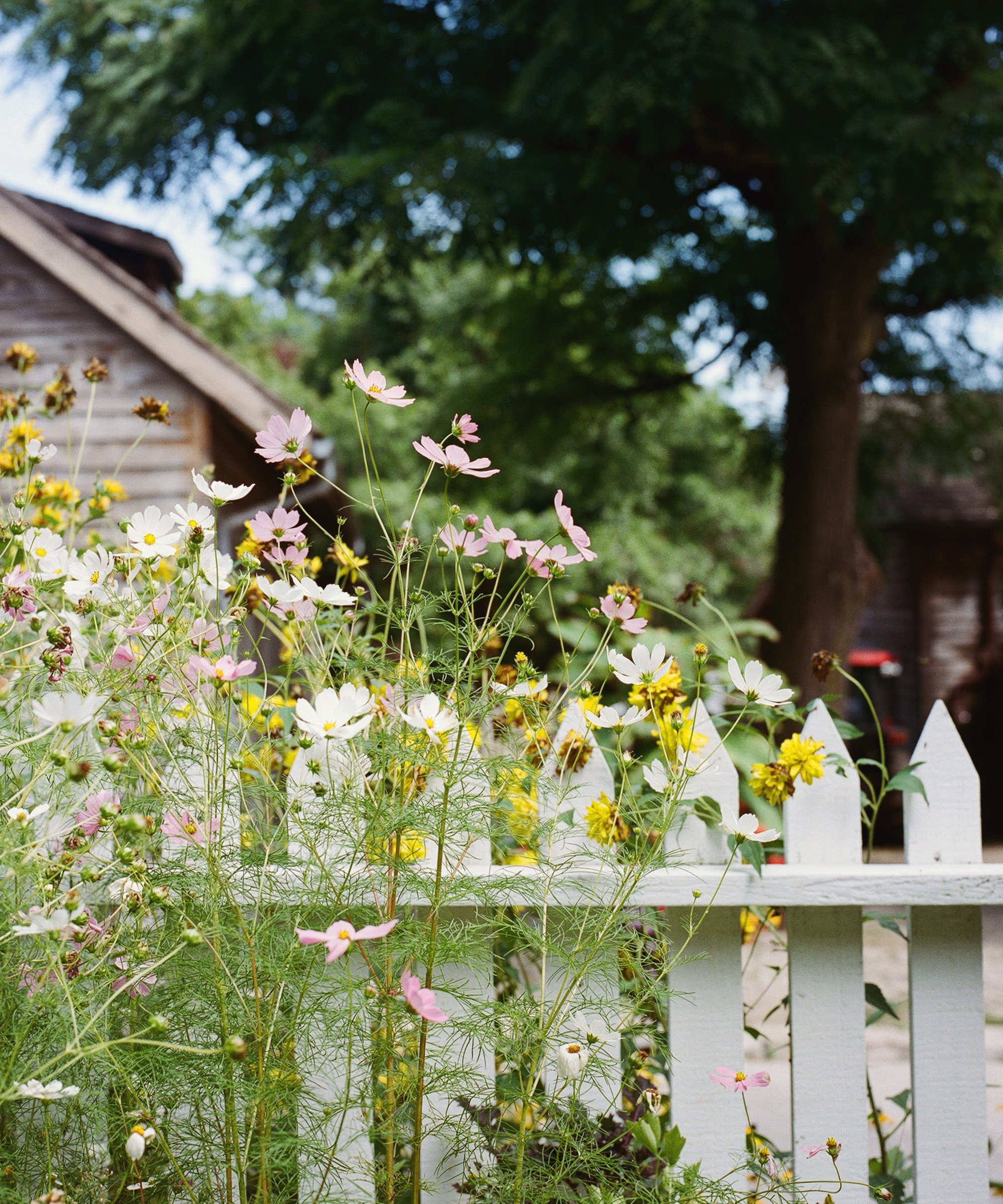
This fence type is usually used as a smart finishing touch for front garden ideas. This is because, given their low height, they don't provide much privacy. They can also be used for sectioning off areas in gardens such as obscuring unsightly bins.
The open panels are great for training plants up and make good gateways for insects to pass through. The traditional white picket fence is emblematic of that 'all American' look as well as the classic English cottage garden.
Wooden picket fences will need to be treated with the best exterior wood paint or wood stain every couple of years. Which might be a positive if you're someone who likes to mix up your style. You could try different color updates every so often depending on the latest paint trends.
3. Slatted fence
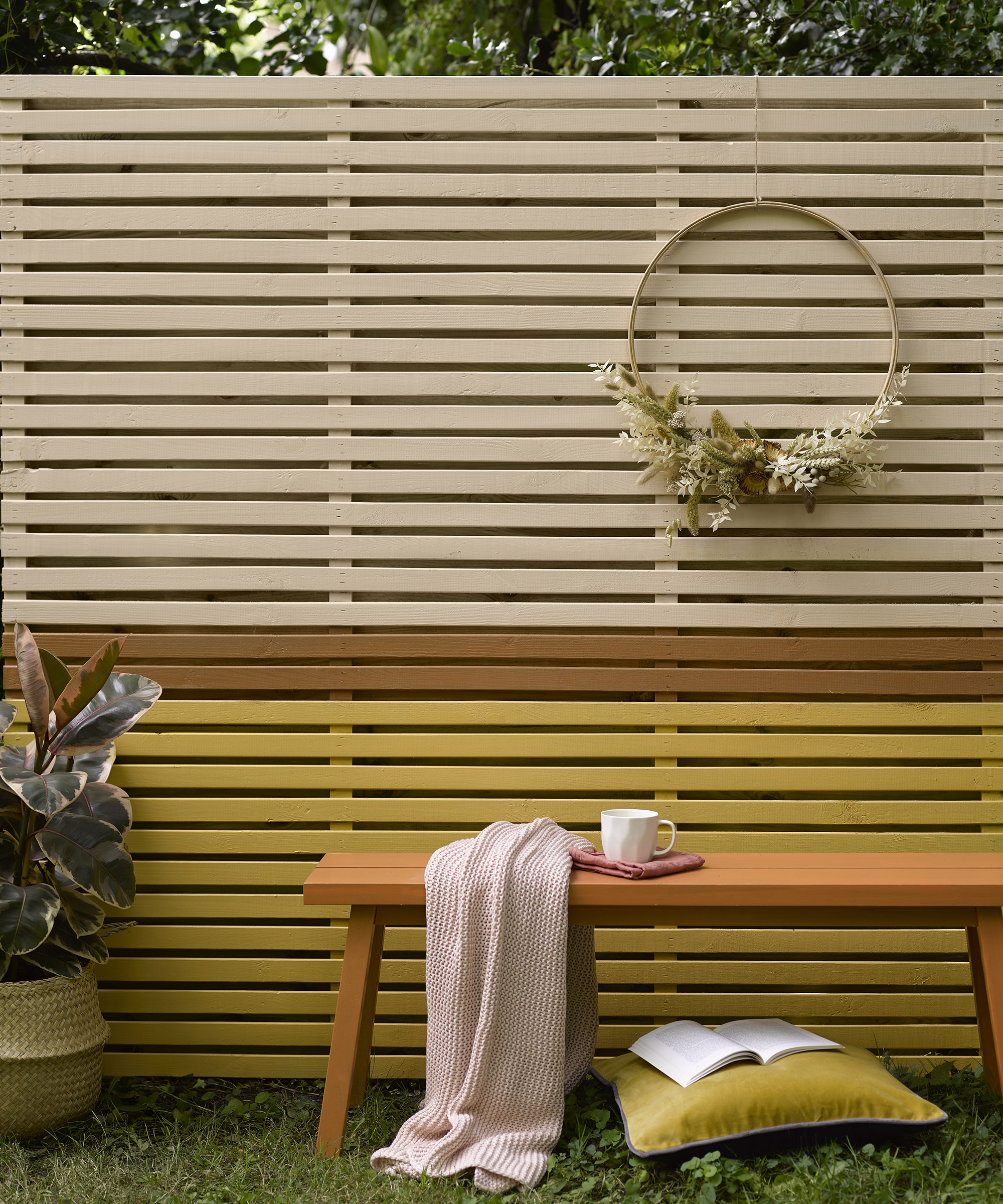
A hot favorite when it comes to the latest fence types, horizontal slatted fencing will create clean, contemporary lines and is therefore a great choice if you're a fan of modern garden ideas.
Landscape architect Stefano Marinaz believes that boundaries can be artistic statements and uses strong lines in the garden to contrast with the natural forms of the plants. ‘The plants do their thing, change and die back throughout the year, but we still need to maintain a strong design, so we always have permanent elements repeated throughout, creating a link that holds it all together,' he says.
If you want to make a strong style statement, why not mix up the colors and pick complementary shades for your fence? Splitting the fence into sections with a colored stripe can create interest in a small garden and helps you to open up the space. A stripe also stops it feeling oppressive.
4. Overlap fence panels
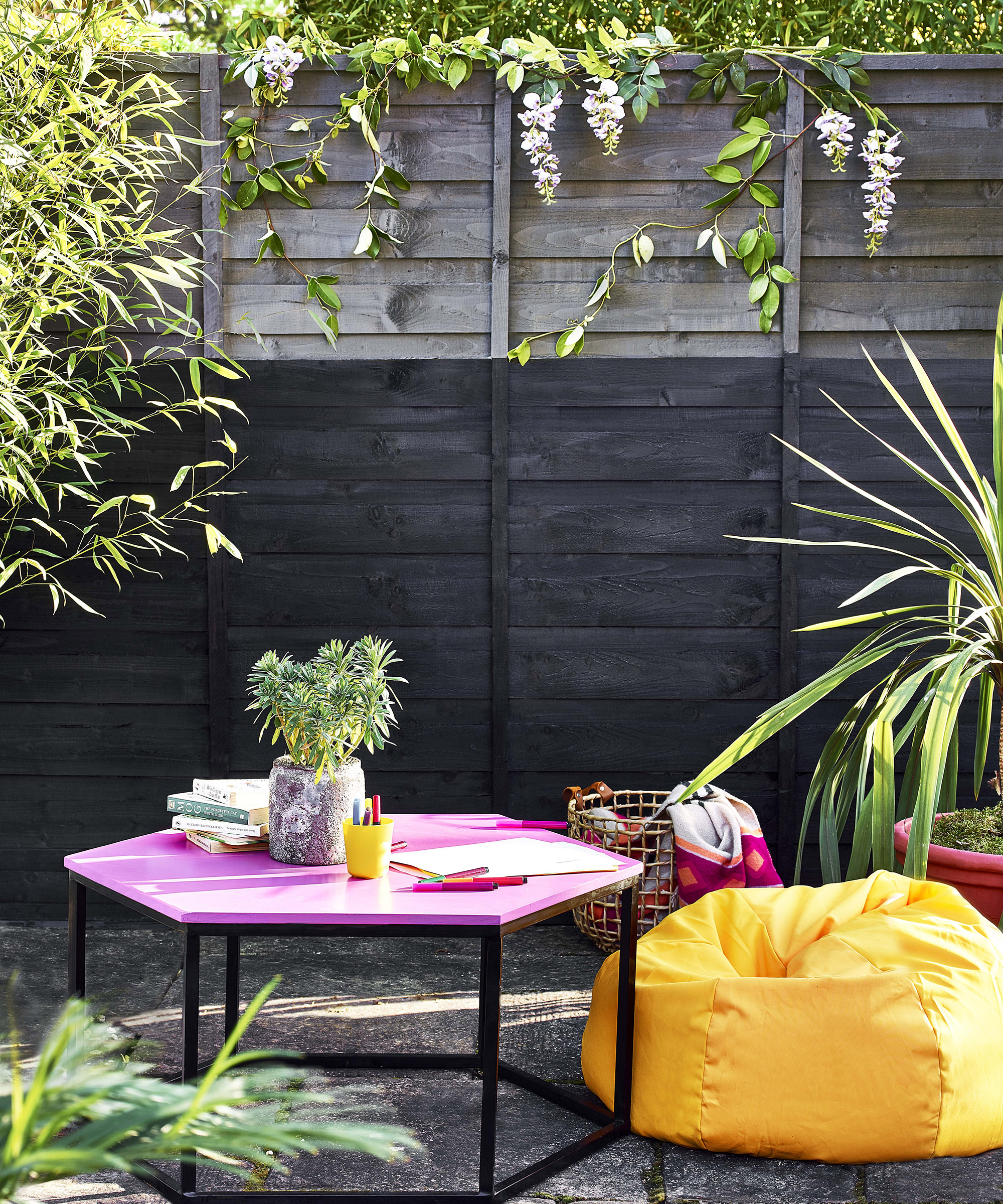
Overlap fence panels are comprised of slats which overlap one another and therefore don't allow any light to get through. Which is great if you're looking for total privacy.
Depending on the look you're going for overlap panels can be horizontal and vertical (vertilap - which are generally stronger than horizontal). They are fairly easy to put up, and require secure fence posts, in steel, concrete or timber. The individual panels are then nailed or slotted in to the posts.
The natural wood color of overlap fence panels can be very appealing in its own right so you may not want to cover it up with paint. Use a protective varnish or stain to enhance the look and protect the wood. Keeping the classic wood shade will give a rustic and naturalistic look to your garden. It's also easy to add a coat of paint if you fancy a change later.
For a more contemporary feel, try a dark shade. Black creates a stunning background for all planting. Not only are these dark colors brilliant at hiding imperfections in your fencing, they can also be a clever way for how to make a small garden look bigger because the boundaries between your garden and the next visually melt away.
5. Trellis fencing
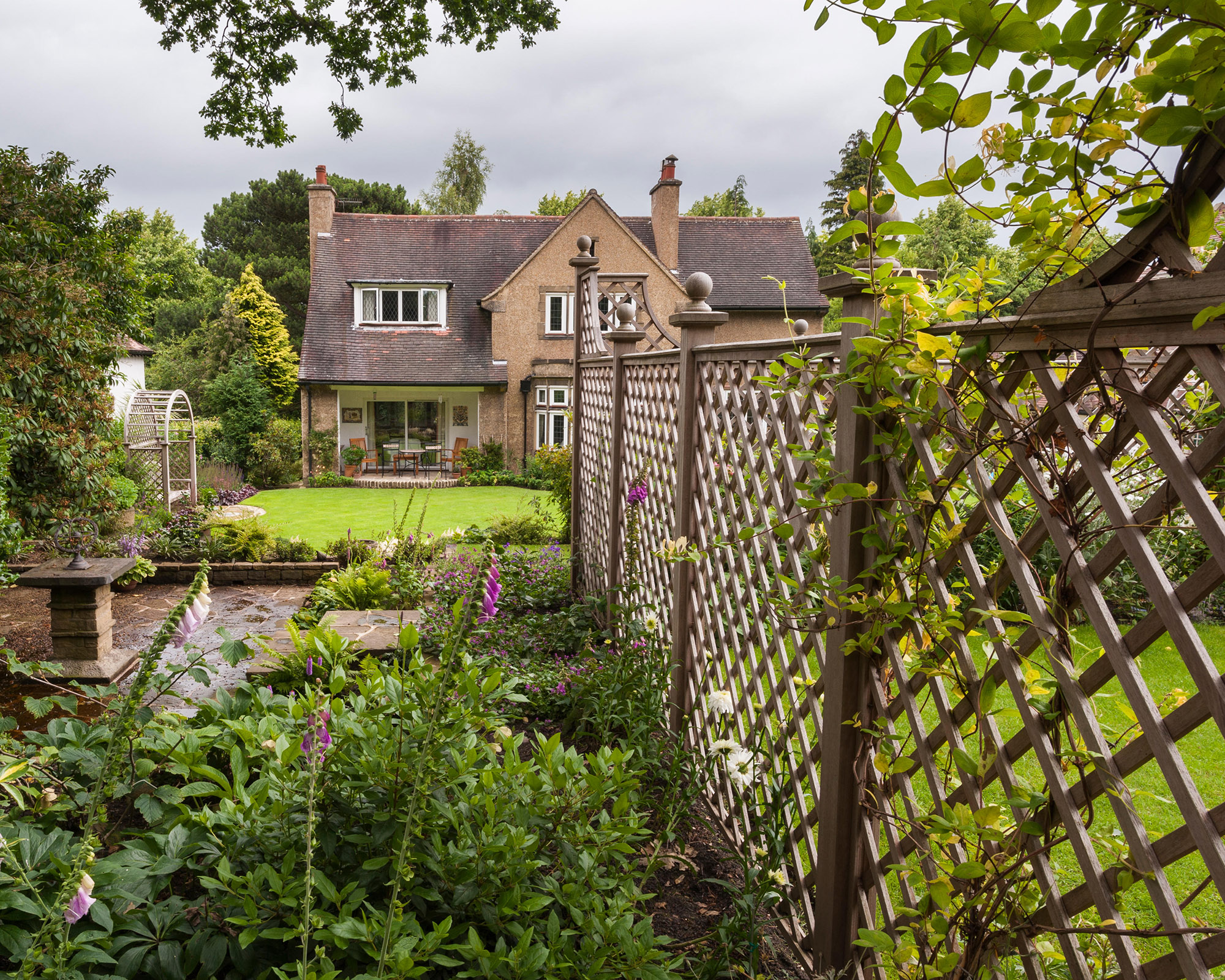
If you're a fan of the additional greenery which hedging gives as a boundary then a trellis may be a good choice for you. Hedges take up space, so may not suit tiny gardens, whereas trellis ideas can take up minimal room while adding foliage and flowers.
Trellis details allow plants to benefit from light and a free-flow of air so are ideal for cultivating climbers into a 'living wall' effect. They can feel less enclosed than a solid fence so can be good for smaller gardens. Creating a porthole which will draw the eye to the view beyond.
The best plants for fence line are usually climbers. Fast growers like ivy will give you great leafy coverage, or if you want to bring extra floral interest to your plot then go for something like a clematis.
6. Vinyl fencing
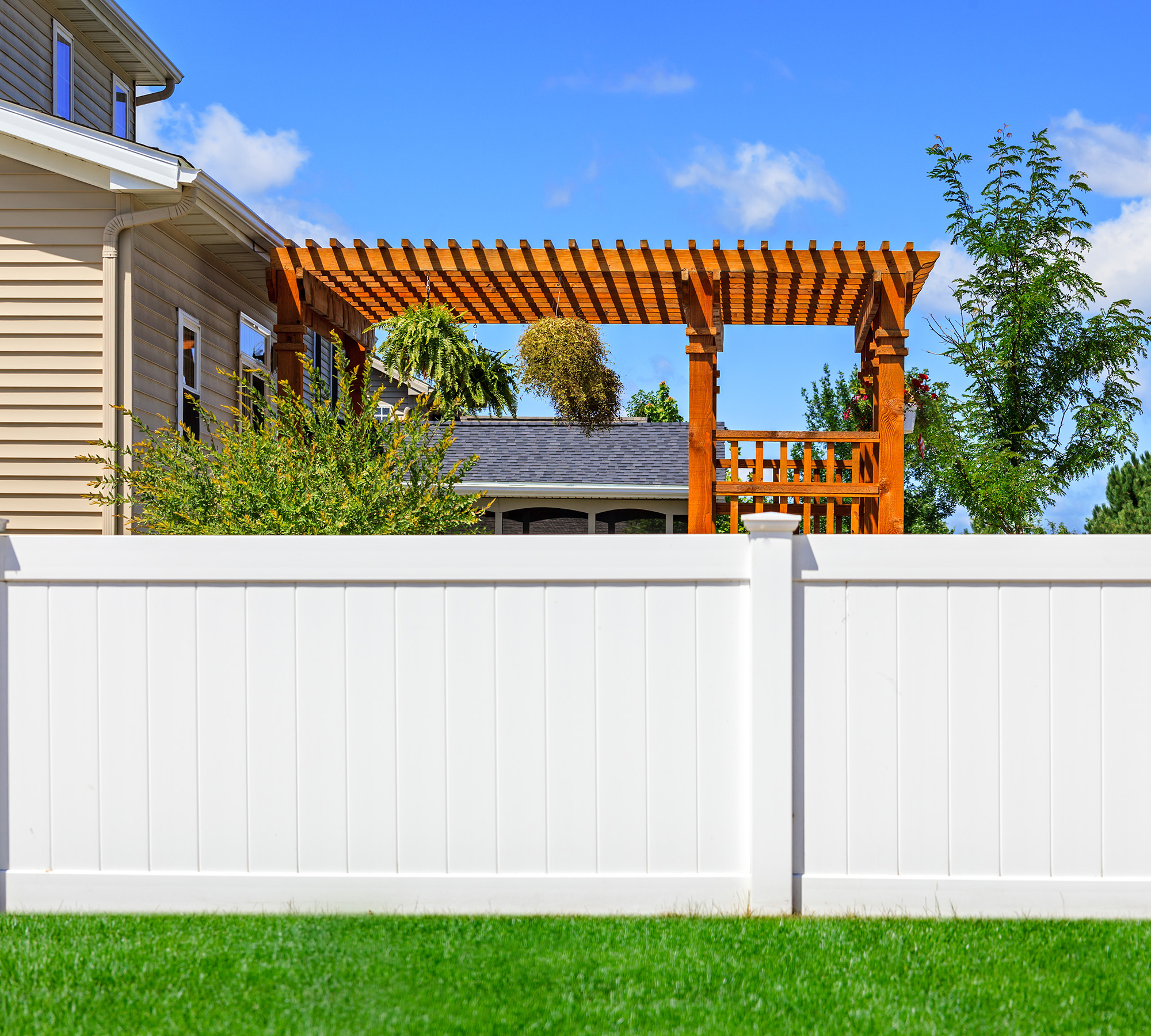
If you're a fan of low maintenance garden ideas, vinyl fences could be the option for you. Vinyl designs come in a range of styles and in a variety of heights and widths. They can be made to look classic and traditional with a picket style. The main difference being that they don't require the same level of maintenance as wooden fences, or metal too for that matter.
Many vinyl fences will come with a lifetime warranty as they don't suffer from the same wear and tear as other fence types. They are resistant to rot and fungus and don't need painting. This being said you will need to make sure you choose your color carefully and make it something that you won't tire of. This is because it is very tricky to paint vinyl.
Vinyl fences may be costlier than wood, however, it is a long term investment so you won't be replacing panels or paying for repairs. It's stronger and more durable than wood and the surface is completely smooth with no danger of splinters.
7. Metal fencing
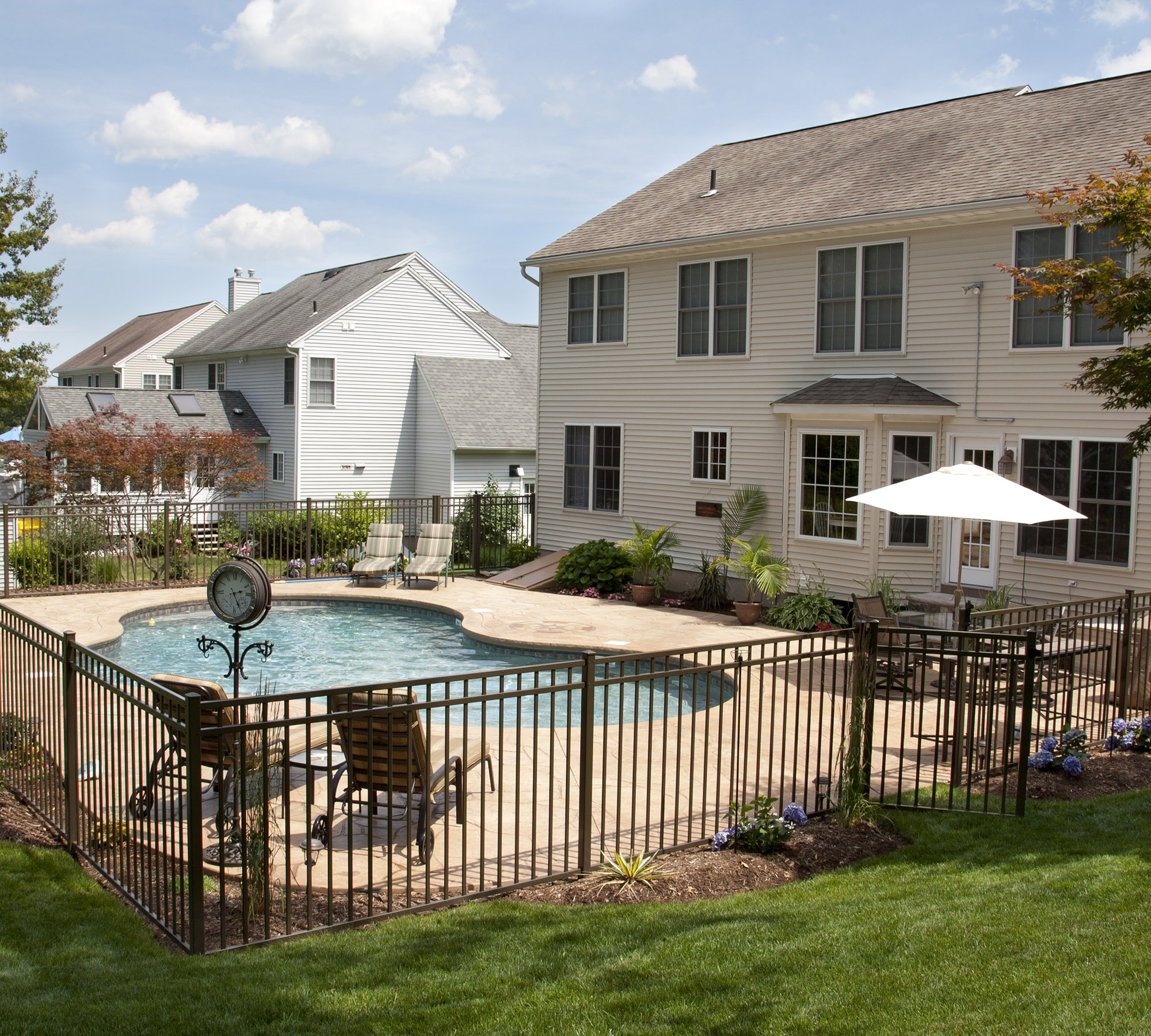
Metal fencing, as you'd expect is extremely strong and hardwearing. Metal is a versatile material and therefore there are lots of styles to choose from. From plain railings to more ornate looks.
Most metal fences will either be galvanized or powder coated to prevent rusting. But every few years or so they will need to be cleaned and repainted to keep them looking fresh.
Metal may be a good choice if you're sectioning off a section of the garden such as a raised patio or terrace as they are low, unobtrusive and don't block the light. They are also an excellent choice if you're searching for pool fence ideas as they can be combined with a lockable gate to create a safe and secure boundary around your pool, which is essential if you have young children.
Who is responsible for a boundary fence?
This may vary of course from State to State and country to country. For example in California adjoining fences are shared responsibility between the homeowners under the Good Neighbour Fence Act of 2013. And a minimum of 30 days written notice must be given before any works take place.
In VIC Australia The Fences Act states that both neighbors are jointly responsible and therefore any costs must be shared. However if yourself or your neighbor wants a particularly pricey fence then they must agree to contribute more towards the difference.
In the UK, check the deeds for your house to see whether you or your neighbor is responsible for it. If it's your neighbour's and they don't agree to replacing or repairing it, you can build your own next to it, but it's important to inform neighbors of your plans.
Before embarking on any fencing projects, the most sensible thing to do is check the rules and restrictions in your local area to make sure you are following correct and up-to-date regulations.
What is the cheapest fence material?
If you're on a tight budget then there are plenty of cheap fence ideas to consider. If all you're looking for is a screen for privacy then cheap polyester fence screens are available which are easy to put up and start from as little as $25.99 from Amazon.
You can also save yourself the cost of installation by opting for something like Amazon's no-dig fence panel option, which in some cases can be installed by simply pushing the panels into the ground.
When it comes to fence posts, timber is the cheaper option although they can be susceptible to rot so it's important to make sure they are treated, while concrete designs are less visually appealing they are long lasting.
To keep panels in top condition treat the wood or use a special fence paint to protect them against the weather.
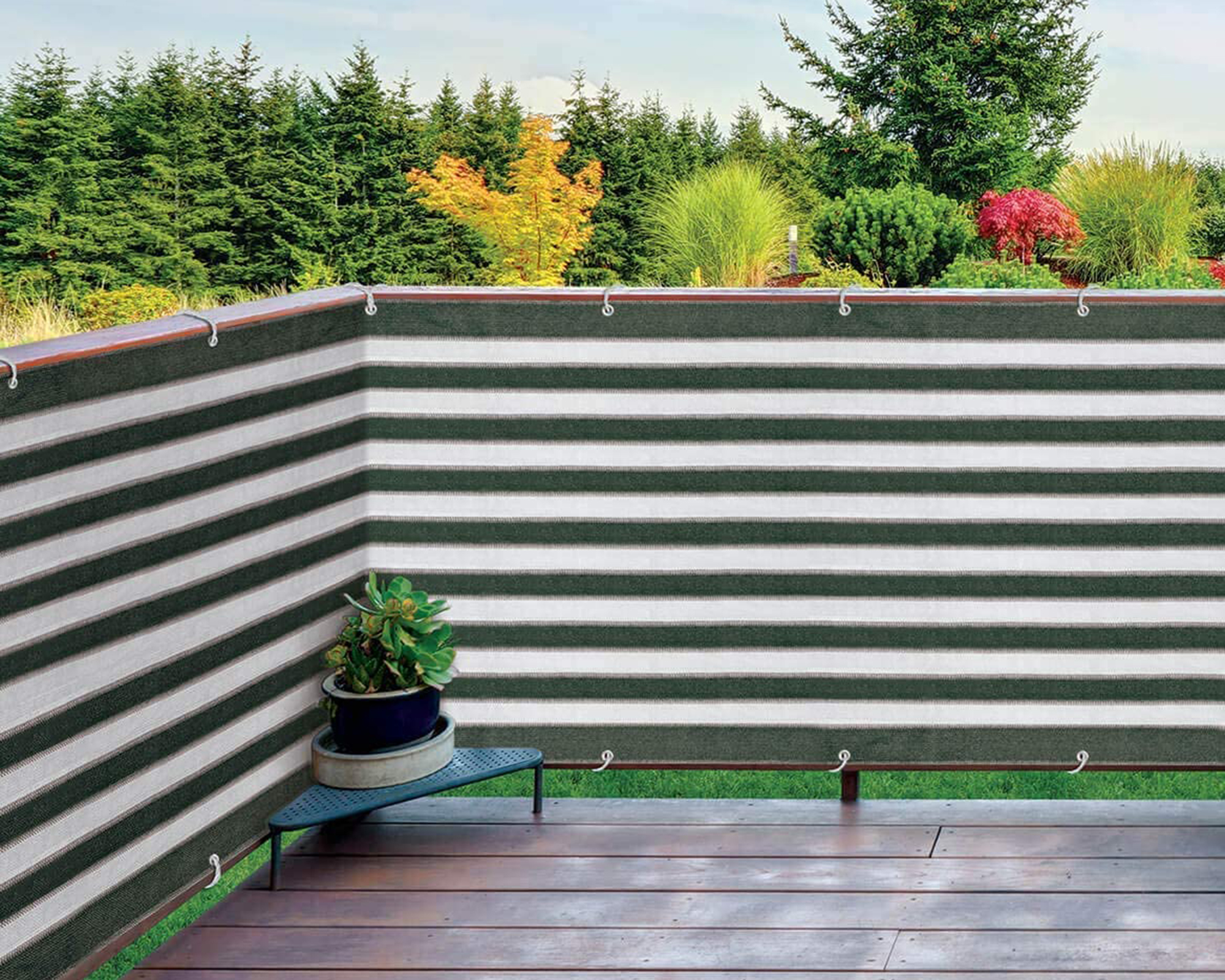
How do I keep a fence in good condition?
To increase the lifespan of wooden structures, it’s important to give them some attention before the weather takes a turn for the worse. Treat wooden surfaces with oil, varnish, paint or other preservatives. Scrub down dirty surfaces prior to treatment and allow to dry beforehand.
Perimeter fences take the brunt of windy weather over winter so it’s important to make sure their structure is sound. It's worth learning how to install fence panels so you can quickly and easily replace any damaged ones during winter storms.
Replace broken slats and ensure that gravel boards are in good condition too. These prevent standing water and rain splashes from penetrating the upper fence, so replace if necessary.
Make sure you check your fence posts as rotting ones are unlikely to remain upright in stormy weather, so prevent damage to your garden from falling timber by shoring up decaying uprights with a concrete or metal spur (available at DIY stores and garden centers).
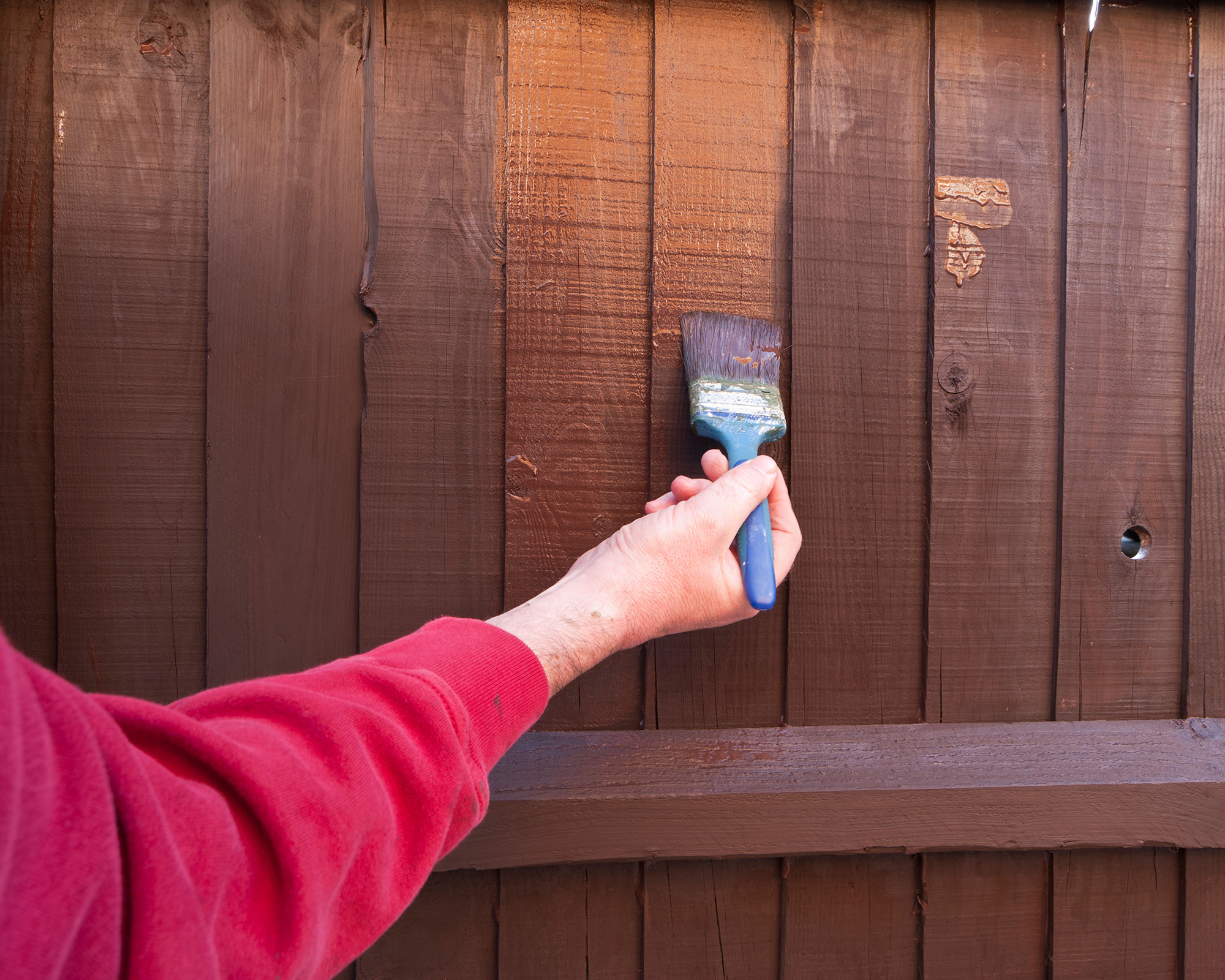

Teresa has worked as an Editor on a number of gardening magazines for three years now. So she is lucky enough to see and write about gardening across all sizes, budgets and abilities. She recently moved into her first home and the garden is a real project! Currently she is relishing planning her own design and planting schemes. What she is most passionate about when it comes to gardening are the positive effects it has on our mental health to grow and care for plants, as well as being great for the environment too and help provide food and shelter for wildlife.
